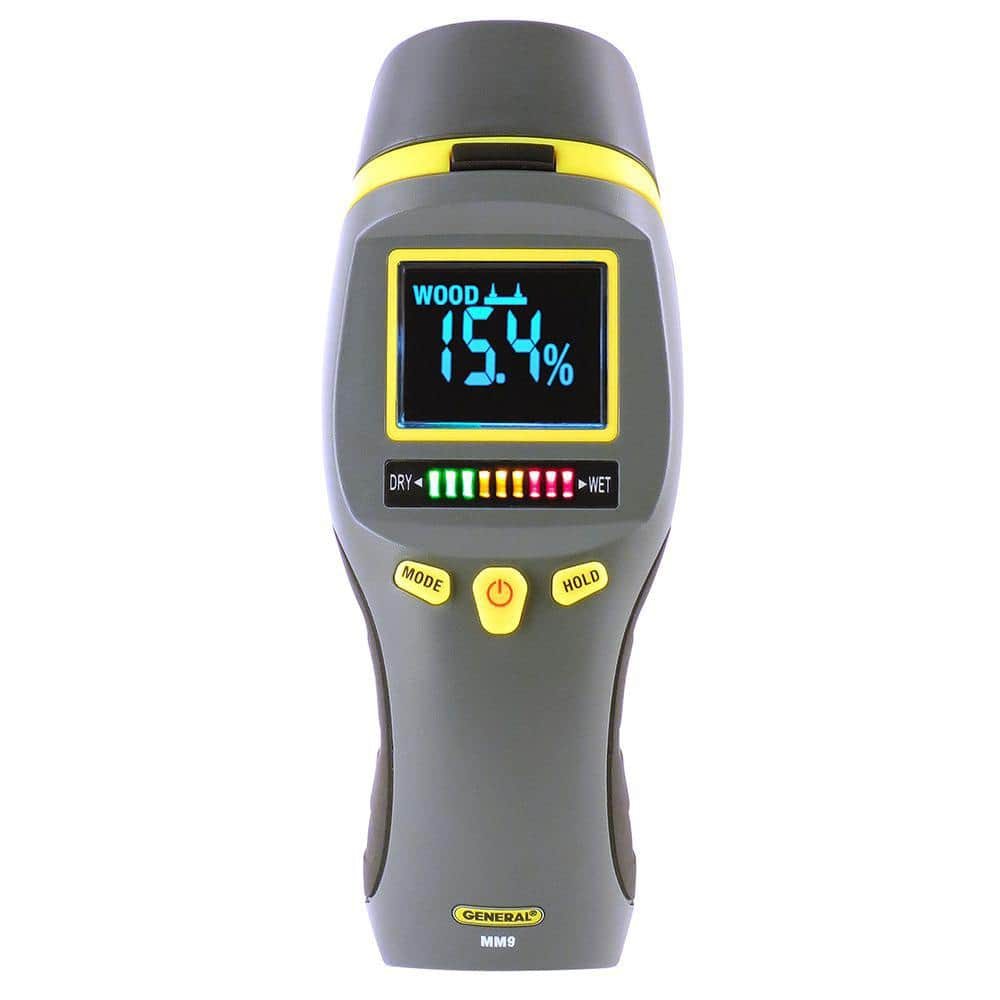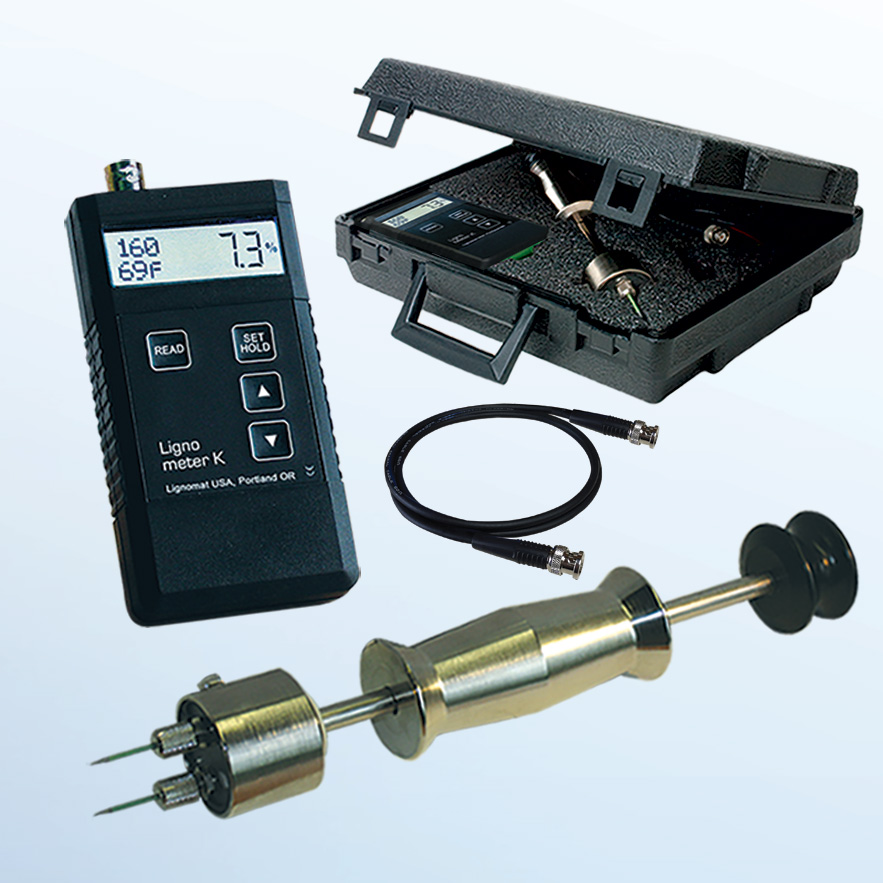Why Every Property Owner Requirements a Moisture Meter: Trick Benefits and Attributes
Why Every Property Owner Requirements a Moisture Meter: Trick Benefits and Attributes
Blog Article
Delve Into the Globe of Moisture Meters: Everything You Required to Know
In the realm of wetness meters exists a globe of accuracy and usefulness that often goes unnoticed. Comprehending exactly how moisture meters run, the various kinds offered, and their varied usages can drop light on their value in making certain top quality and performance.
Just How Moisture Meters Work
Moisture meters run by gauging the electric conductivity or capacitance of products to establish the dampness material present. These meters are indispensable tools across various markets, including farming, building, and woodworking. By using various approaches such as pinless or pin-type innovation, moisture meters give exact readings that help specialists make notified decisions.
Pin-type dampness meters function by inserting the sharp pins right into the material being tested. The electrical conductivity in between the pins is then measured, with greater moisture degrees causing increased conductivity. Moisture Meter. On the various other hand, pinless wetness meters make use of electromagnetic signals to scan a bigger location without triggering any damages to the material's surface. These meters are ideal for promptly evaluating dampness levels in huge areas or completed products.
No matter the technique made use of, moisture meters play a vital role in protecting against problems such as mold development, architectural damages, or item flaws triggered by excess dampness. Understanding exactly how these meters job is essential for making sure the top quality and integrity of materials in different applications.
Sorts Of Moisture Meters
Offered the crucial function wetness meters play in numerous sectors, it is necessary to understand the different types offered to experts for properly analyzing dampness degrees - Moisture Meter. There are largely 2 major kinds of dampness meters: pinless and pin-type dampness meters

On the various other hand, pinless wetness meters use electro-magnetic sensing unit plates to check a larger location of the material without creating any type of damages. This type appropriates for swiftly scanning large locations and is commonly utilized for flooring, walls, and ceilings. Pinless meters are hassle-free for taking readings on completed surfaces without leaving any type of noticeable marks.
Both sorts of dampness meters have their advantages and are selected based upon the particular needs of the job available. Recognizing the differences in between these kinds is essential for specialists to make accurate wetness analyses.
Applications Throughout Industries
Construction experts rely on wetness meters to analyze the wetness degrees in structure materials like concrete, timber, and drywall, which is important for keeping structural stability and preventing problems like rot or mold from this source and mildew. The floor covering industry uses dampness meters to measure the moisture material in subfloors prior to mounting various floor treatments, protecting against costly damages due to excess wetness. In the food sector, dampness meters are used to keep track of and manage moisture degrees in items such as grains, nuts, and dried out fruits to keep quality and quality.
Tips for Using Moisture Meters
Use the moisture meter's calibration settings to make certain precise readings when measuring the dampness material in various products. Furthermore, make sure the meter is established to the right wetness range for the product you are determining to obtain the most specific results.
When using a pin-type wetness meter, insert the pins to the ideal deepness recommended for the product being evaluated. This ensures that the wetness readings are extracted from the appropriate deepness within the material, giving a much more accurate representation of its moisture material. For pinless moisture meters, keep in mind to maintain appropriate call with the material's surface area to get trustworthy readings.
Routinely inspect and replace the batteries in your wetness meter to protect against inaccurate readings due to low power. Store the meter in a dry and safe place when not being used to prolong its lifespan and maintain its accuracy. By complying with these suggestions, you can make best use of the efficiency of your wetness meter and acquire accurate moisture content dimensions throughout different materials.
Upkeep and Calibration
To make certain the precision of wetness content dimensions, normal upkeep and calibration of the moisture meter are important action in its correct functioning. Maintenance entails keeping the moisture meter tidy and complimentary from particles that might affect its analyses. It is very important to follow the supplier's guidelines for cleaning to protect against damage to the device. Furthermore, regular calibration is essential to confirm the precision of the readings. Calibration adjusts the wetness meter to ensure that it gives constant and reliable outcomes.
Calibration ought to be done periodically, particularly if the wetness meter is made use of frequently or in vital applications where specific measurements are needed. Lots of dampness meters come with find calibration tools or can be adjusted by specialist solutions. Moisture Meter. It is recommended to keep a log of calibration dates and results to track the performance of the moisture meter with time. By calibrating the dampness and preserving meter frequently, individuals can trust the precision of the wetness material dimensions obtained.
Conclusion

Finally, wetness meters play an essential role in numerous industries by properly determining the moisture web content of materials. Comprehending exactly how these tools work, the different types offered, and appropriate upkeep and calibration are necessary for getting dependable outcomes. Whether in production, agriculture, or building, the usage of moisture meters helps guarantee quality assurance and effectiveness in procedures.

In final thought, moisture meters play a critical duty in different markets by precisely measuring the wetness material of materials.
Report this page